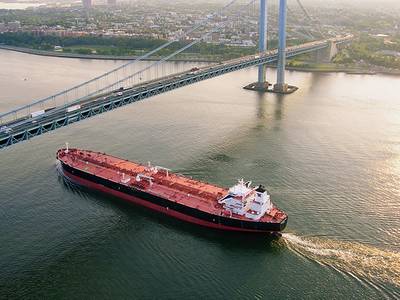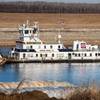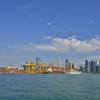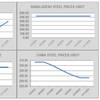INTERTANKO’s documentary committee has launched bunker surcharge clauses for Emission Control Areas (ECA).
Rising bunker prices due to rising oil prices and volatility in global politics can have a dramatic effect on trade as they fluctuate not just day to day, but also port to port. Bunker fuel costs today form the largest part of owners’ expenses, ranging from 40-60% of the overall operating costs of a ship.
The tightening of regulations in Emission Control Areas (ECAs) requiring the use of low sulphur content fuels not only carries with it the risk of fines, detentions and disputes, but further adds to owners’ operating costs. The first ECA in effect was the Baltic in 2006 followed by the North Sea in 2007. A stricter emission allowance down from 1.5 % to 1.0 % was introduced in 2010. The U.S., Canada and the Caribbean followed suit in 2012 and 2014.
MARPOL Annex VI, requiring a maximum sulphur content in fuel oil within ECAs of just 0.10 % by weight (down from 1.0%) comes into force in January 2015. Certain states such as California have already introduced legislation to enforce this. More regulation will certainly follow.
From 2015, owners may face escalating fuel costs in the EU, North America and Caribbean and any other ECA designated areas as ultra-low sulphur fuel carries a premium (today) of about $200-300 over regular bunker fuel prices. There is also a potential for increased demand in low sulphur fuels from January 2015, together with questions whether levels of supply will meet demand forecasts. These issues may also affect the predictability of pricing when freight rates are being fixed.
To minimize the risk of bunker volatility for Members, and to take account of increasingly onerous regulations on emissions, INTERTANKO has developed a bunker surcharge clause.
The clause addresses any additional bunker costs when trading in an Emissions Control Area (ECA) – INTERTANKO MARPOL Annex VI Clause for Voyage Chartering in Emission Control Areas.
The clause has also been adapted for use in the parcel trades – INTERTANKO MARPOL Annex VI Clause for Voyage Chartering in Emission Control Areas (Parcel trades).
These clauses are designed to assist members in recouping actual amounts paid for bunkers, thereby avoiding disputes with charterers over bunker prices and minimizing risk associated with price volatility.
MARPOL Annex VI Clauses for Voyage Chartering in Emission Control Areas
(i) Worldscale formula
Where an owner fixes using Worldscale, there is no need for a bunker adjustment clause to cover the additional costs of low sulphur fuel used in an ECA. These extra bunker costs are not yet included in the flat rate but are today compensated by fixed differentials set out in the Worldscale book (using 2014 rates) as follows:
The WS differentials, $x.xx per mile are covering the extra bunker costs used by the standard Worldscale tanker within the ECA for bunkers with max 1.0%/0.1% sulphur content when calculated on a roundtrip basis. The calculations are based on bunker prices given in preamble part A (Explanatory notes)/4 (Basis for calculations)/(d) (Bunker prices).
ECA diff equals Bunker diff * Bunker consumption per day standard ship/speed* 24
ECA diff. Baltic & N Sea 2014 ($665.39 – $632.44) * 55/ (14.5 * 24) = $ 5.21
ECA diff. N Am 2014 ($713.11 – $632.44) * 55/(14.5 * 24) = $12.21
ECA diff. California 2014 ($1058.00 – $632.44) * 55 /(14.5 * 24) = $67.26
Members should note that the Worldscale Association recently announced its fixed rate differentials for 2015. The figure set for bunkers with max 0.1% sulphur content – Baltic and North Sea ECA and European in-port bunker allowances will be $920.75/mt. Low sulphur fuels for the North American ECA & Caribbean ECA and in-port bunker allowances will be $1028.02. Baltic and North Sea ECA miles will attract a fixed differential of $48.35, while North American ECA miles will be compensated by a fixed differential of $65.31.
The bunker prices Worldscale will use for calculating other 2015 Worldscale flat rates will be $614.81/mt.
(ii) Lumpsum or USD/tonne basis
Not all INTERTANKO Members fix using Worldscale. Given the tighter ECA requirements from 2015, INTERTANKO has developed two clauses to accommodate the ECA differentials when fixing outside of Worldscale on lumpsum or USD/metric ton basis. The first clause is for use in CPP/dirty trades; the second has been adapted for use in parcel trades. These clauses provide for each trade a pragmatic way to calculate the bunker surcharge element for trading in an ECA.
To achieve maximum certainty at fixing and reimbursement of additional ECA costs, the mechanism of the CPP/dirty trades clause is based on actual consumption. Time within the ECA can be taken from the Master’s statements (as it would be with a deviation or call at an interim port) and the additional bunker costs can then be invoiced and paid without deduction. Charterers should be in a position to make this calculation and pay the bunker surcharge together with freight. Timings within the ECA will be clear from the Master’s statements as they will coincide with a fuel switch when entering the ECA and will end in the ECA port at ‘hoses off’.
The reference prices for fuel used in the first clause are those available prior to loading on ‘first in first out’ basis, again a formula that is familiar to our Members when calculating bunkers consumed for deviation or interim port calls. This can easily be adapted if Members are more used to using ‘bunkers last stemmed’ or if a reference point from Platts is preferable. The parcel trade version shows how a reference to Platts might work. Either way, the fuel oil reference prices used can be tracked in supporting invoices so that any additional charge can be verified by charterers.
Owners and charterers must therefore agree the following values prior to fixing:
Cs = Daily consumption at Sea
Cp = Daily consumption at Port
According to INTERTANKO, this is unavoidable given the major bunker cost differential in trading in an ECA area. These figures may vary owner to owner but figures for the same ship type should be comparable and therefore capable of agreement.
Note that there would be no additional compensation for owners who have opted to use scrubbers or other alternatives to low sulphur fuel to satisfy the ECA requirements.
INTERTANKO MARPOL Annex VI Clause for Voyage Chartering in Emission Control Areas
1. Owners warrant that the Vessel shall comply with the requirements of MARPOL Annex VI Prevention of Air Pollution from Ships, Regulation 14 “Sulphur Oxides (SOx) and Particular Matter”.
2. The Parties agree that should Charterers require the Vessel to operate in any of the Emission Control Areas (ECAs) (as designated under MARPOL Annex VI) then Charterers shall compensate Owners for any additional bunker costs arising from all periods of operation in any ECA in accordance with the formula below:
(X – Y) * [(Cs * Ds) + (Cp * Dp)] = ECA Bunker Surcharge
Where:
X = Price of low sulphur marine gas oil
Y = Price of IFO 380 centistokes
Cp = Daily consumption at Port
Cs = Daily consumption at Sea
Dp = Actual Days at Port within ECA, calculated from NOR to last hose disconnected according to Master’s statement
Ds = Actual Days at Sea within ECA according to Master’s statement
3. The fuel oil reference prices X and Y in clause 2 above shall be prices actually paid on a ‘first in, first out’ basis supported by Owners’ paid invoices.
4. The ECA Bunker Surcharge shall be invoiced and paid without deduction no later than payment of freight.
Additional wording for Parcel Trades
Additional wording is required for use in the parcel trades. In consultation with Members engaged in the parcel trades, INTERTANKO established that the use of actual figures may over complicate the calculation of the ECA Bunker Surcharge. This could require for example a calculation to be made of cargo handled at a particular berth within an ECA with the share of the total cargo on board varying from port to port and even from berth to berth.
To achieve certainty at the outset and an early reimbursement of the ECA Bunker Surcharge in the parcel trades, the parcel trade version therefore uses estimated figures. This means there is no need to wait to conduct a complicated calculation for each parcel based on the Master’s time and consumption statements as the ECA Bunker Surcharge will be pre-agreed on estimates.
This may mean that the reimbursement of fuel costs to Owners will not be 100% accurate in each case as it is based on a theoretical voyage based on estimates. However the Committee felt that the degree of variance would be outweighed by the ability to achieve prompt payment of the surcharge along with freight rather than await a complex calculation and risk late payment. From Charterers’ perspective this approach will provide a certain lumpsum cost rather than risk exposure to a varying amount. Note that this approach based on pre-agreed estimates could also be used in the CPP/Dirty trades if preferred.
Again owners and charterers must agree the values (Cp, Cs, Dp and Ds) prior to fixing. (NB Cs and Cp may be a single pair of numbers or a series of pairs if different ship types with different consumptions can be nominated under the CoA). Several port-brackets (Cp * Dpn) may be used and added into the algorithm, one each for every port or berth where P1 is first berth, P2 is second berth etc., if the prorated values are different.
INTERTANKO MARPOL Annex VI Clause for Voyage Chartering in Emission Control Areas (Parcel trades)
1. Owners warrant that the vessel will comply with the requirements of MARPOL Annex VI Prevention of Air Pollution from Ships, Regulation 14 “Sulphur Oxides (SOx) and Particular Matter”.
2. The parties agree that should Charterers require the vessel to operate in any of the Emission Control Areas (ECAs) (as designated under MARPOL Annex VI) then Charterers shall compensate Owners for any additional bunker costs arising from all periods of operation in that ECA in accordance with the formula below:
(X – Y) * [(Cs * Ds) + (Cp * Dp1) + (Cp *Dp2)] =ECA Bunker Surcharge
Where:
X = Price of low sulphur marine gas oil
Y = Price of IFO 380 centistokes
Cp = Daily consumption at Port
Cs = Daily consumption at Sea
Dp = Estimated Days at Port within ECA, calculated from NOR to last hose disconnected * Estimated share of the cargo to be handled at that berth.
Ds = Estimated Days at Sea within ECA * Estimated share of the cargo onboard
3. The fuel oil reference prices X and Y in clause 2 above shall be a composite of delivered prices at Houston, Rotterdam and Singapore of IFO 380 cSt and Marine gasoil quoted by Platts Bunkerwire on the first B/L date, or the first subsequent listed day if prices are not listed on that day.
4. The ECA Bunker Surcharge shall be invoiced and paid without deduction no later than payment of freight.
In summary
Either way, via the Worldscale formula or the INTERTANKO MARPOL Annex VI clauses for Voyage Chartering in Emission Control Areas, an owner who trades in and out of an ECA area can be properly compensated for the additional costs from the use of low sulphur fuels mandated by MARPOL Annex VI/ the EU Sulphur Directive. This is imperative now as e.g. a vessel at berth in an EU port for over two hours is already required by the EU Sulphur Directive to use 0.10% sulphur content fuel. It will become more important in January 2015 and beyond as sulphur emission regulations continue to tighten. Owners are therefore encouraged to begin negotiations with charterers to ensure a proper distribution of risk and cost that the new requirements will bring.















